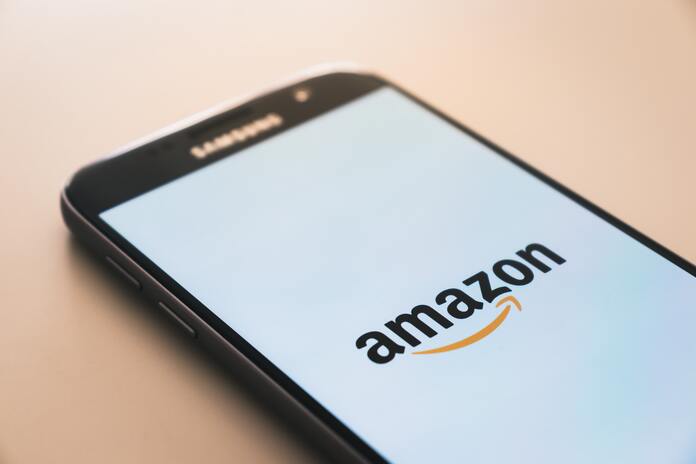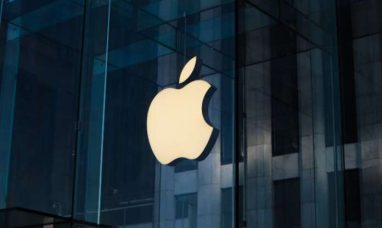Amazon Stock (NASDAQ:AMZN)
Many investors aren’t sure how to properly value Amazon stock. At first look, Amazon’s (NASDAQ:AMZN) valuation multiples appear to be high in comparison to the industry median. Despite a considerable decline from its previous five-year average of 190 times earnings, Amazon’s projected P/E ratio of 81 times earnings remains high.
This is a common quandary for investors who want to invest in a market leader but discover that its stock constantly trades at an excessive multiple. This article seeks to allay your fears by giving a framework for creating an investment plan for pricey but fundamentally sound stocks.
How to Value Amazon Like a Pro
When it comes to evaluating equities like Amazon, the sum-of-the-parts method is the most effective tactic. This method not only improves your comprehension of the company’s performance but also allows you to make more confident investing selections.
We shall examine Amazon’s retail and AWS businesses separately here.
Retail Sector
Investors are concerned about low margins. Many investors believe that Amazon’s retail operation is unprofitable, as seen by the figures below, which show how its North American retail division has functioned at extremely low margins and its global branch has periodically lost money from 2016 to 2022. As a result, investors find it difficult to value Amazon’s retail operation.
Amazon’s Retail Revenue Distribution
However, if we assessed Amazon’s retail operation in terms of revenue streams, we would have a better grasp of its performance.
Its retail operation generates money from a variety of sources, including:
- Online shop
- The physical store
- Service provided by a third-party seller
- Service by subscription
- Service for advertising
Despite a 1% decline in online shop sales in 2022, Amazon’s overall retail sales increased by 6%. Over the last five years, the company’s retail business has regularly grown at a 16% CAGR.
This shows that Amazon’s retail sector is still rapidly expanding. The company is constantly investing in cutting-edge technologies and new products. As a result, increasing expenses do not necessarily imply that its retail sector is losing money.
Investing in the Pharmacy Industry
Amazon’s retail empire has grown far beyond consumer products, and the business is now looking to disrupt conventional service sectors.
Amazon, for example, launched Amazon Clinic in Q4 2022, a virtual health service that provides individualized and affordable care for a variety of diseases. Amazon Clinic makes its debut on Amazon.com’s top page. Without making an appointment, customers can select from a network of telehealth providers. Furthermore, Amazon Pharmacy’s RxPass offers unlimited prescription drugs for $5 a month. Amazon’s transparent pricing strategy has the potential to disrupt the market.
One Medical is another example of Amazon’s healthcare expansion. Amazon finalized the acquisition of One Medical in the first quarter of 2023. It is a primary care organization that provides 24/7 virtual care services as well as in-office visits around the United States for preventive and routine health, chronic care management, pediatric care, and mental health services.
Amazon has the ability to expedite operations, decrease costs, and provide unprecedented convenience to healthcare and pharmaceutical businesses by utilizing its extensive infrastructure and Prime membership base.
Using the DCF Model to Evaluate a High-Growth Company
As a result, the DCF model and long-term margin assumptions appropriately estimate the retail segment’s worth in the whole organization when valuing a high-growth business.
Amazon has moved beyond traditional retail merchandise, but its primary concentration remains on retail consumers. In order to develop a plausible long-term projection for Amazon’s free cash flow margin, we will investigate the profitability of its competitors, including Walmart (NYSE:WMT), Target (NYSE:TGT), Costco (NYSE:COST), Best Buy (NYSE:BBY), and CVS (NYSE:CVS).
Amazon’s Gross Margin Is Higher
When comparing Amazon to its traditional retail competitors, it is clear that Amazon has a far higher gross margin. This is primarily due to the supplementary services it provides, such as Prime membership, seller services, and advertising.
Amazon Has a Cost Structure That Is Competitive
Although Amazon does not disclose a full breakdown of SG&A expenditures between its Amazon Web Services (AWS) and retail segments, it is worth noting that Amazon has a better gross margin than its conventional retail competitors due to extra services such as Prime membership and advertising. Even without a thorough SG&A breakdown, Amazon’s costs comprise only 13% of retail revenues (10% of sales and marketing expenses plus 3% of advertising spending), which is comparable to competitors Costco and CVS when AWS-related costs are eliminated.
As a result, we believe that Amazon can generate a greater free cash flow margin in the long run than its retail peers.
Using the DCF model, we evaluated Amazon’s retail business’s equity value to be $3,189 billion based on the following assumptions:
- 5% free cash flow margin
- WACC: 10%
- In 2023, there will be no growth.
- 3% terminal growth rate
- Net debt: -2876 million (as of the first quarter of 2023).
- Shares outstanding: 10.17 billion (as of the first quarter of 2023).
Given Amazon’s low operating margin, some investors choose to exclude the retail division entirely when undertaking valuation research. However, we urge against taking that approach because incorporating AWS into its $1.25 trillion market capitalization can greatly confound investors’ decision-making processes.
Segment Value on AWS
Let us now focus our attention on Amazon’s AWS business.
AWS has maintained a constant market share over the last few years. This is due to its cost advantage in the Infrastructure as a Service (IAAS) sector and its extensive range of Platform as a Service (PAAS) offerings.
Cloud Shift Benefited AWS
Gartner expects that public cloud computing will overtake traditional IT investment in commercial IT spending by 2025. This “cloud shift” encompasses cloud-ready categories such as application software, infrastructure software, business process services, and system infrastructure industries.
By 2025, it is expected that 51% of IT spending in these categories would have shifted from traditional to public cloud solutions, up from 41% in 2022.
As a result of the cloud shift trend, we estimate that AWS will maintain its market share and expand with the industry. Furthermore, we forecast a long-term free cash margin of roughly 15% and calculated AWS’s equity value using a DCF model to be $9602 billion.
Making use of the sensitivity test: guiding investment decisions and maximizing returns
When the retail ($3,189 billion) and AWS ($9,602 billion) divisions are combined, the overall valuation is around $13 trillion ($126.3 per share), which is roughly comparable to the present pricing.
Does this mean that investors won’t be able to profit from the current price? Certainly not. The model does not take into account a wide range of potential trends and catalysts.
Untapped Potential: The Impact of AI on AWS’s Value
ChatGPT and other conversational AI technologies are gaining popularity, which has the potential to benefit cloud service providers.
To perform properly, these AI models demand tremendous processing resources and storage capacity. As more enterprises and developers use conversational AI solutions, demand for cloud services is expected to rise, helping cloud service providers by increasing resource utilization and generating new income streams.
According to Bloomberg, as more firms transfer their workloads to the public cloud, Amazon Web Services, Microsoft, Google, and Nvidia are expected to benefit the most. According to Bloomberg, the generative AI business will be worth $1.3 trillion by 2032, with a 42% CAGR over the next decade.
The prospective impact of AI on AWS was not factored into our value model. However, if AWS experiences fast growth of more than 30%, the stock valuation might increase significantly, perhaps reaching 142%, as shown in the sensitivity test table below.
Segment-Specific Downside Risk
There are also obvious downside risks in the market. Moving forward, both segments may experience difficulties.
AWS segment weakness could result in a 42% drop in stock price. The cloud battle heated up as Amazon indicated that businesses were still being cautious with their expenditure during this uncertain period.
Amazon’s AWS witnessed a 16% slowdown in revenue growth and a 1000 basis point decline in margin in the first quarter of 2023.
In comparison, its cloud competitor, Oracle, increased cloud IAAS revenues by 77% during the same period, owing to cutting-edge technologies catering to users interested in leveraging generative AI on the cloud.
“Oracle’s Gen2 Cloud has quickly become the number one choice for running Generative AI workloads,” stated Larry Ellison, Oracle Chairman, and CTO. “Why? Because Oracle offers the world’s highest performance, lowest cost GPU cluster technology. NVIDIA uses our clusters, including one with over 4,000 GPUs, for its AI infrastructure. Our GPU clusters are constructed with the highest-bandwidth and lowest-latency RDMA network available and can expand up to 32,000 GPUs. As a result, cutting-edge LLM development firms such as Mosaic ML, Adept AI, and Cohere, as well as 30 additional AI development firms, recently signed contracts to purchase more than $2 billion of capacity in Oracle’s Gen2 Cloud.”
Investors should be warned that AWS may face short-term issues as a result. A 5% reduction in the industry’s CAGR assumption results in a 16% loss in stock price, according to our methodology. A 1000 basis point decrease in long-term free cash flow margin leads to a 42% decrease, as in the preceding example.
Retail Is Vulnerable to Macroeconomic and Competitive Threats
We believe Amazon’s retail division is now facing two risks.
Risk at the macro level: Several macroeconomic issues are putting Amazon’s product sales in danger. According to the most recent data from the United States Census Bureau, retail sales in the United States increased by only 1.6% year on year, indicating a slowing demand environment. This underscores the persistent downward impact on discretionary spending, which is critical for Amazon’s retail sales.
It’s worth noting that Amazon’s retail revenues are dominated by discretionary spending, making the company more vulnerable to changes in customer purchasing habits and economic situations.
Risk of Competition
Amazon is most certainly losing market share in retail. According to the data presented above, non-store retailers in the United States expanded by 7%, whereas Amazon’s online store grew by only 3%.
Amazon has competition from retailers such as Walmart and Temu. Walmart delivered an outstanding performance in the first quarter of 2023, with an amazing 27% increase in its US e-commerce sales. This excellent success is due to Walmart’s strong presence in the food industry, where it has capitalized on consumer desire for online grocery shopping.
Despite Amazon’s attempts through its return policy to generate traffic and improve consumer footfall in Whole Foods locations, the higher price point of Whole Foods products has hampered the translation of this traffic into actual sales.
Furthermore, Temu, a PDD Holdings firm, has made aggressive inroads into the US market and actively pushed its products in order to compete directly with Amazon. Temu, for example, offers a comparable CarPlay device for 40% cheaper than Amazon.
Conclusion
The method mentioned above can be used to determine the worth of several equities with high valuations. The DCF model, in our opinion, offers investors a quantitative tool for evaluating risks and rewards that is more successful than the multiple methods.
Based on our data, our model predicts that if AWS can effectively capitalize on the AI boom and reach a growth rate greater than 30% in 2023-2024, its stock might rise by up to 142%. However, it is critical to recognize that AWS may face short-term difficulties as it navigates the competitive landscape.
In contrast, there is the possibility of a 42% drop in Amazon’s stock value owing to competition hazards. Considering the risk-reward profile, we have opted to maintain a “Neutral” rating and take a cautious approach, preferring to watch the events before making any definitive conclusions.
We will monitor market dynamics and assess how the competitive environment changes in order to alter our rating as needed.
Featured Image: Unsplash
















